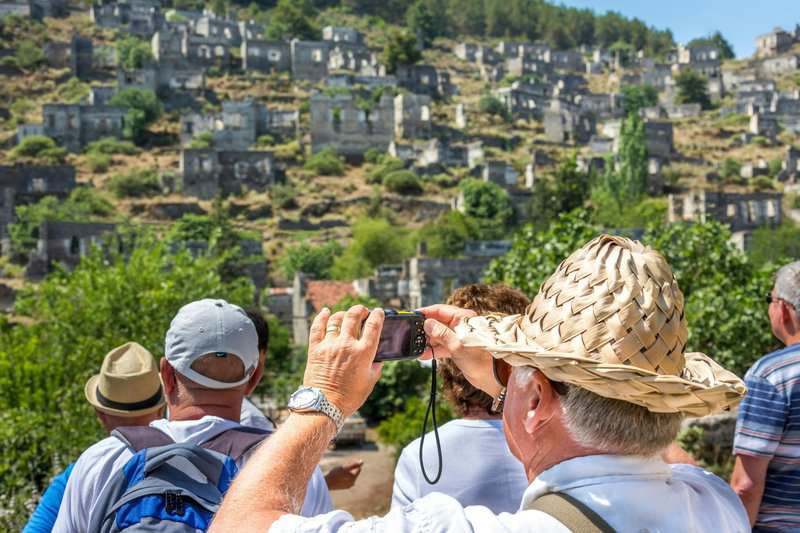Ghost towns might seem like places lost to time, but many of them still have plenty of life—at least when it comes to tourism. From crumbling mining camps to deserted desert outposts, these once-bustling communities now attract curious travelers from all over the world. Whether it’s for the eerie beauty, the rich history, or the perfect photo op, tourists continue to visit these forgotten towns year after year. Some are preserved like open-air museums, while others are barely standing, but all of them offer a fascinating glimpse into the past. If you’re drawn to places where history lingers and silence speaks volumes, these 30 ghost towns are well worth the trip.
Bodie, California
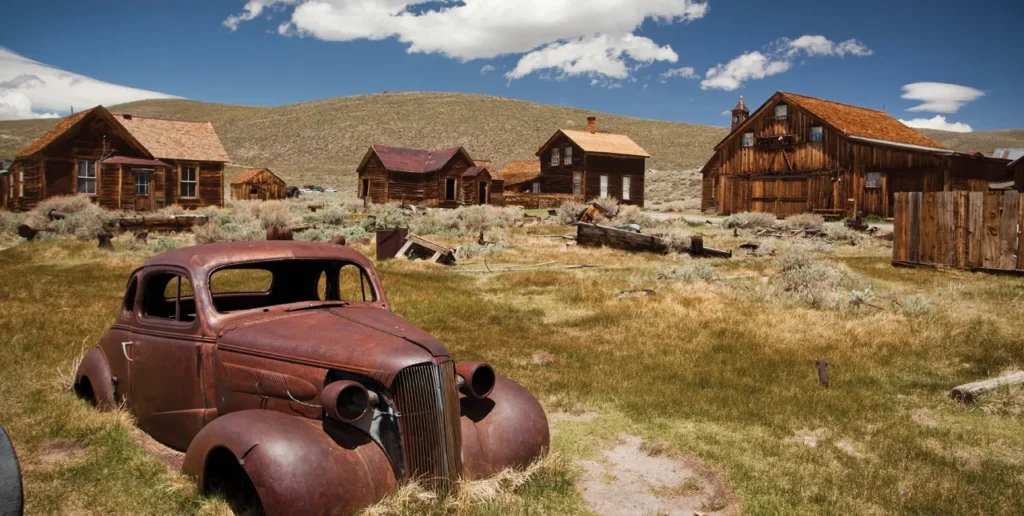
Bodie is one of the most well-preserved ghost towns in the United States. Once a thriving mining town during the California Gold Rush, it boasted a population of over 10,000 people in its heyday. Today, visitors can wander its dusty streets, peering into old storefronts, houses, and even the schoolhouse. The state park that preserves Bodie is a testament to the town’s history, with many original buildings still standing, providing a snapshot of life from the 1800s. The isolated location adds to the town’s haunting atmosphere, and the ghostly remains seem frozen in time. Bodie is also known for its “ghosts” of the past; reports of unexplained occurrences add to the mystery surrounding it. Open year-round, the town draws curious travelers looking for a blend of history and the supernatural.
Centralia, Pennsylvania

The coal town of Centralia was once a bustling community, but it was effectively abandoned after an underground coal fire began in 1962 and has been burning ever since. The fire caused dangerous levels of carbon monoxide and other toxic gases to seep into the town, forcing most residents to evacuate. Today, the ghost town remains eerily quiet, with the occasional plume of smoke rising from cracks in the earth. Despite being largely off-limits, Centralia still attracts visitors who come to see the remnants of the town and the overgrown roads that once connected it. The abandoned highway, Route 61, is particularly famous for being overtaken by nature. The eerie, apocalyptic landscape makes Centralia a popular spot for those seeking a chilling experience. It’s a place where history, disaster, and mystery collide.
Pripyat, Ukraine

Perhaps one of the most well-known ghost towns in the world, Pripyat was abandoned after the Chernobyl nuclear disaster in 1986. The town was home to workers and their families who were involved with the nearby nuclear plant. When the explosion occurred, the town was evacuated within hours, and its residents never returned. Today, Pripyat is a hauntingly quiet place where nature is slowly reclaiming buildings and streets. Tourists can take guided tours through the town, where they’ll see abandoned amusement parks, decaying apartment blocks, and eerie relics of a past life. The radioactive contamination in the area makes it a dangerous place to visit, but it’s a must-see for those interested in the dark history of the nuclear accident. The town’s abandoned atmosphere creates a unique sense of eeriness that draws visitors from around the world.
Rhyolite, Nevada
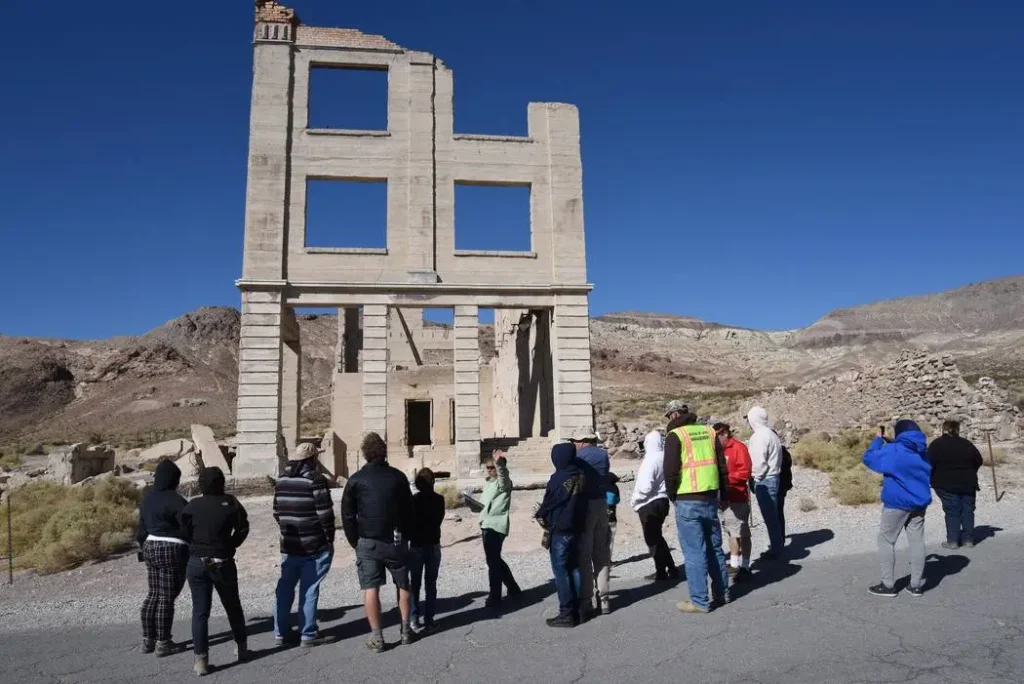
Located in the Nevada desert, Rhyolite is an old mining town that boomed during the gold rush but quickly faded into ruin after the ore ran out. At its peak, the town was home to thousands of residents and boasted a post office, banks, and even an opera house. Today, the remnants of Rhyolite are a major attraction for tourists seeking a glimpse of the Wild West. Many of the original buildings still stand, including a train depot, stone ruins of former homes, and the iconic “Last Supper” sculpture, a popular photo spot. The stark, desert landscape adds to the town’s haunting beauty, and its isolation makes it a peaceful place for exploration. Rhyolite is also famous for its status as one of the most photographed ghost towns in the U.S. The combination of history, mystery, and striking desert scenery ensures Rhyolite remains a favorite for ghost town enthusiasts.
Kayaköy, Turkey

Kayaköy, also known as the “Ghost Village,” is an abandoned Greek village in southwestern Turkey. It was home to Greek Christians for centuries, but after the population exchange between Greece and Turkey in 1923, the village was left deserted. The stone houses and churches are still standing, and the village remains remarkably well-preserved. With its scenic views of the surrounding mountains and the nearby Mediterranean Sea, Kayaköy is a peaceful yet poignant reminder of the village’s once-thriving community. Tourists can stroll along the narrow streets, exploring homes, chapels, and old schools, all of which exude an eerie sense of history. The village’s abandonment after such a tragic event lends it a sense of sadness and nostalgia. Kayaköy remains a popular site for history lovers and those interested in the cultural implications of forced migrations.
Hashima Island, Japan

Known as “Battleship Island” due to its resemblance to a warship, Hashima Island is a small, abandoned island off the coast of Nagasaki, Japan. Once a bustling coal mining facility, it housed thousands of workers during the height of its operation in the 1950s. However, when the coal reserves were exhausted, the island was abandoned in 1974. The ghost town is now a haunting reminder of the island’s industrial past. Tourists can visit via guided tours, walking through crumbling buildings, including a school, homes, and an old hotel. The stark, gray landscape and the island’s desolate feel make it a striking and eerie place to explore. The island was even featured in the James Bond film Skyfall, adding to its mystique. Despite the island’s collapse into ruin, Hashima remains a popular site for those fascinated by its history and isolation.
Goldfield, Arizona

Once a booming mining town, Goldfield, Arizona, was founded in the late 1800s and quickly grew into a bustling community. The discovery of gold attracted miners, businesspeople, and families, but after the gold ran out and the economy collapsed, the town was abandoned. Today, Goldfield has been partially restored, and visitors can experience what life was like during the town’s heyday. Ghost tours are a popular activity, as many believe the town is haunted by spirits of the past. The town’s historical buildings, including a saloon and old jail, are open to the public and offer a glimpse into the rough and rowdy days of the Old West. Goldfield’s eerie atmosphere, combined with its fascinating history, makes it a must-see for ghost town enthusiasts. The surrounding desert landscape provides a perfect backdrop for exploring the ghost town’s remains.
Bannack, Montana

Bannack, Montana, is a former gold mining town that was founded in 1862 and was once the territorial capital of Montana. As gold was discovered, the town grew rapidly, but it soon suffered from lawlessness and various other issues, leading to its decline. By the 1930s, most of the town’s residents had moved away, and Bannack became a ghost town. The town has been preserved as a state park, and visitors can explore its 60 original buildings, including a schoolhouse, hotel, and courthouse. Bannack is also famous for its haunting beauty and is considered one of the most well-preserved ghost towns in the U.S. The surrounding mountains and the quiet atmosphere add to the sense of isolation and nostalgia. Many believe the town is haunted, making it a popular site for ghost hunters. Bannack is open year-round, allowing visitors to experience the haunting history of this once-thriving mining town.
Colma, California

Unlike other ghost towns, Colma is home to more dead residents than living ones. Established in the early 1900s when San Francisco needed to relocate its cemeteries to make room for urban development, Colma became the final resting place for thousands of people. Today, the town’s population is around 1,500, while the number of graves exceeds 1.5 million. Despite its cemetery-filled nature, Colma has become a quirky, serene tourist destination. Visitors can tour the town’s cemeteries and learn about the history of the relocated bodies. Colma is also home to several memorials and historical landmarks, making it a unique destination for those interested in both the macabre and the peculiar history of urban growth. The quiet nature of the town, with its fascinating history, draws visitors who are curious about the peculiar arrangement of living alongside the deceased.
Alaska’s Portage

Portage was a bustling village during the early 20th century, serving as a hub for commerce and travel between Alaska’s interior and the rest of the world. In the 1940s, a massive earthquake altered the geography of the area, leading to a rise in the waters of nearby Portage Lake. The resulting flooding forced residents to abandon the town, and it was never rebuilt. Today, Portage is mostly submerged, but the ghost town’s remains are still visible above the waterline, making it a unique and haunting site to visit. Tourists can take boat tours to see the abandoned structures, some of which have been partially overtaken by the surrounding wilderness. The eerie, quiet beauty of Portage Lake adds to the mystique of the abandoned village. The area is also known for its historical significance, with interpretive signs that detail the events that led to Portage’s downfall. Despite its eerie nature, Portage continues to draw adventurous visitors interested in exploring its ghostly remnants.
Calico, California

Calico was founded in 1881 as a silver mining town and quickly became one of the richest silver producers in California. At its peak, the town had over 500 mines and supported thousands of residents. But when silver lost its value in the 1890s, Calico was abandoned nearly overnight. In the 1950s, the town was purchased and restored by Walter Knott, founder of Knott’s Berry Farm, who turned it into a tourist attraction. Today, Calico is a popular ghost town park, offering reenactments, gold panning, and tours through the old mines. The restored buildings preserve the Wild West atmosphere while providing entertainment for families and history lovers alike. Despite its theme park feel, Calico retains a genuine sense of history and serves as a time capsule of frontier life.
Garnet, Montana

Garnet is one of Montana’s best-preserved ghost towns, nestled high in the Garnet Mountains. Founded in the 1890s during a gold rush, it once held a bustling population of miners and merchants. But when the gold dried up in the early 20th century, the town quickly emptied. Due to its remote location, many buildings remained untouched by vandals or developers. Visitors today can explore dozens of structures, including a hotel, general store, and cabins that still hold original furnishings. In the winter, the town is only accessible via snowmobile or cross-country skiing, adding to its adventurous appeal. Garnet’s haunting quiet and preserved atmosphere make it a favorite for travelers seeking authenticity and solitude.
Kennecott, Alaska

Kennecott was once a thriving copper mining camp in the early 1900s, operated by the Kennecott Copper Corporation. It was a model industrial town, with a hospital, school, and tennis court—all perched in the remote Wrangell-St. Elias Mountains. When the copper ran out in 1938, the company abandoned the site, leaving behind the massive red mill buildings and infrastructure. The town remained untouched for decades, eventually becoming part of a national park. Today, visitors can take guided tours of the eerie industrial structures, hiking trails, and nearby glaciers. The scale of the buildings and the isolation of the site create a surreal experience. Kennecott is a monument to industrial ambition and the stark realities of boom-and-bust towns.
Terlingua, Texas

Located in the Big Bend region, Terlingua was once a cinnabar mining town during the mercury boom of the early 20th century. When prices dropped, the town was deserted, but in recent decades, artists, adventurers, and off-grid enthusiasts have breathed new life into the place. While many of the original adobe structures are crumbling, some have been repurposed into homes, galleries, and quirky shops. Tourists flock to the area for the famous chili cook-off, rustic lodging, and desert landscapes. The blend of old ruins and bohemian culture makes Terlingua one of the most unique ghost towns in America. It’s a place where the past lingers, but new life thrives in unexpected ways. The town’s eccentric charm and rugged scenery continue to draw curious travelers year-round.
St. Elmo, Colorado

St. Elmo is one of Colorado’s most famous ghost towns and was founded in 1880 during the gold and silver boom. At its peak, the town had a population of over 2,000, complete with hotels, saloons, and a telegraph office. However, when the mines closed in the 1920s, the town was quickly deserted. Today, many of its original buildings still stand, and the town looks much as it did a century ago. Visitors can stroll down the wooden sidewalks and explore the general store and old homes. Ghost stories abound, especially surrounding the hotel and post office, adding an air of mystery. Nestled in the Sawatch Range, St. Elmo also offers beautiful hiking and off-roading opportunities in the surrounding mountains.
Virginia City, Montana

Not to be confused with the one in Nevada, Virginia City, Montana, was once the territorial capital during the gold rush. It’s more of a “living ghost town,” where some residents still live, but the bulk of the town remains preserved from the 1800s. Tourists can walk through old-time saloons, visit historic theaters, and even take stagecoach rides. The town thrives on its historical reenactments and summer events, attracting thousands every year. Though commercialized, much of the architecture and atmosphere remains authentically old west. Nearby Nevada City, a companion ghost town, adds to the historical depth of the area. Together, they offer one of the most immersive Old West experiences available in the U.S.
Cahawba, Alabama

Cahawba, also known as Old Cahawba, was Alabama’s first state capital. Located at the confluence of the Cahaba and Alabama rivers, the town thrived in the early 1800s. But repeated flooding, the Civil War, and economic hardship led to its eventual abandonment. Today, Cahawba is an archaeological park where visitors can explore ruins, cemeteries, and interpretive trails. The town is rumored to be haunted, and ghost tours are held regularly. It’s a serene, moss-draped site where history and mystery coexist. Though the buildings are mostly gone, the foundations and layout provide a fascinating glimpse into early American life in the South.
Animas Forks, Colorado

Perched at over 11,000 feet in the San Juan Mountains, Animas Forks is one of Colorado’s highest-elevation ghost towns. Founded in the 1870s, it was a bustling mining community despite its extreme weather. By the 1920s, harsh conditions and dwindling resources led to its abandonment. Today, the town is accessible by 4×4 vehicles or ATVs, making it popular among off-road enthusiasts. Visitors can explore the old wooden structures and enjoy sweeping views of the alpine landscape. The isolation of Animas Forks adds to its mystique, as snow still blankets the area well into spring. For adventurous tourists, it offers both history and breathtaking mountain scenery.
Thurmond, West Virginia

Once a booming railroad town, Thurmond was a vital stop along the Chesapeake & Ohio Railway. At its peak, it handled more coal than Cincinnati and was known for its luxury hotels and saloons. As coal declined and the railroad shifted focus, the town slowly emptied out. Today, it’s part of the New River Gorge National Park, with several buildings preserved by the National Park Service. Visitors can walk through the depot and along the tracks, imagining what life was like in its heyday. The isolated setting and overgrown tracks give it a cinematic, almost post-apocalyptic feel. Thurmond is a poignant reminder of how quickly fortunes can change in America’s industrial heartland.
Glenrio, Texas/New Mexico

Straddling the Texas-New Mexico border, Glenrio was once a bustling stop on the legendary Route 66. In its prime, it had motels, diners, gas stations, and even a post office. But when I-40 bypassed the town in the late 1970s, traffic—and life—dried up almost overnight. Today, the empty buildings and faded signs are a haunting reminder of the town’s better days. Tourists following the old Route 66 trail often stop here for photos and to soak in the nostalgia. The location’s unique position on the state line adds an extra layer of charm, with one foot in Texas and the other in New Mexico. For fans of Americana and vintage road trips, Glenrio is a fascinating, time-capsule destination.
Jerome, Arizona
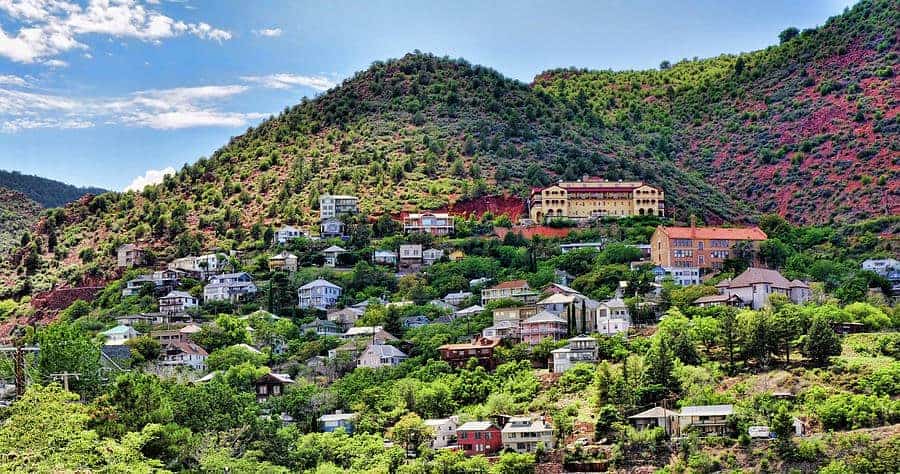
Once known as the “Wickedest Town in the West,” Jerome was a copper mining town perched high in the Black Hills of Arizona. After the mines closed in the mid-20th century, the town was nearly abandoned. But artists and free spirits began moving in during the 1960s, breathing new life into the crumbling community. Today, Jerome is a vibrant mix of ghost town and art colony, with galleries, wine bars, and museums occupying historic buildings. Visitors can explore haunted hotels and mining ruins, all while enjoying panoramic views of the Verde Valley. Jerome’s spooky reputation only adds to its appeal, and ghost tours are a favorite activity. It’s a rare example of a ghost town that reinvented itself without losing its eerie charm.
Shaniko, Oregon
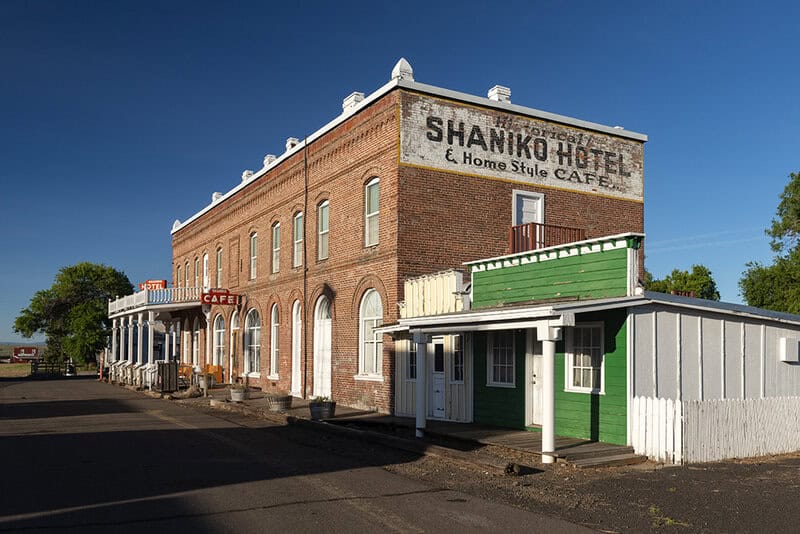
Once known as the “Wool Capital of the World,” Shaniko thrived in the early 1900s thanks to its central role in Oregon’s wool and cattle industry. But when railroad routes changed, the town was left behind. Today, it’s a sleepy place with preserved buildings, including a hotel, jail, and old-time general store. Tourists stop by to photograph the old structures and enjoy seasonal events like the Shaniko Ragtime & Vintage Music Festival. The town’s dry, high-desert setting and classic Western architecture make it feel like a movie set. While a few residents still live there, the overall feel is unmistakably ghost town. Shaniko offers a quiet, atmospheric experience of the Old West.
Castle Dome, Arizona

Located in the Sonoran Desert, Castle Dome was a booming silver mining town in the late 1800s. Today, it’s part of a historical museum site that offers a full immersion into life in the American frontier. Over 50 restored buildings populate the site, including a schoolhouse, blacksmith shop, and saloon. The desert surroundings make it feel wonderfully isolated, enhancing the authenticity of the experience. Visitors can also tour a nearby mine and learn about the area’s geology and mining history. Castle Dome is one of the few ghost towns where you can truly feel like you’ve stepped back in time. The attention to historical detail makes it a favorite among families and educators.
Nelson, Nevada

Tucked in the Eldorado Canyon near Las Vegas, Nelson was the site of one of Nevada’s most profitable gold mines. The town was notorious for its lawlessness and violence during its boom years. After the mining dried up, Nelson was largely abandoned—but it’s now a popular tourist destination and film set location. Visitors can take mine tours, photograph vintage cars, and explore rustic, picturesque buildings. The desert setting and eclectic artifacts scattered throughout give the town an almost surreal feel. It’s especially popular with photographers and Instagrammers due to its cinematic look. Nelson proves that even the wildest towns can find a second life as a living museum.
Oatman, Arizona
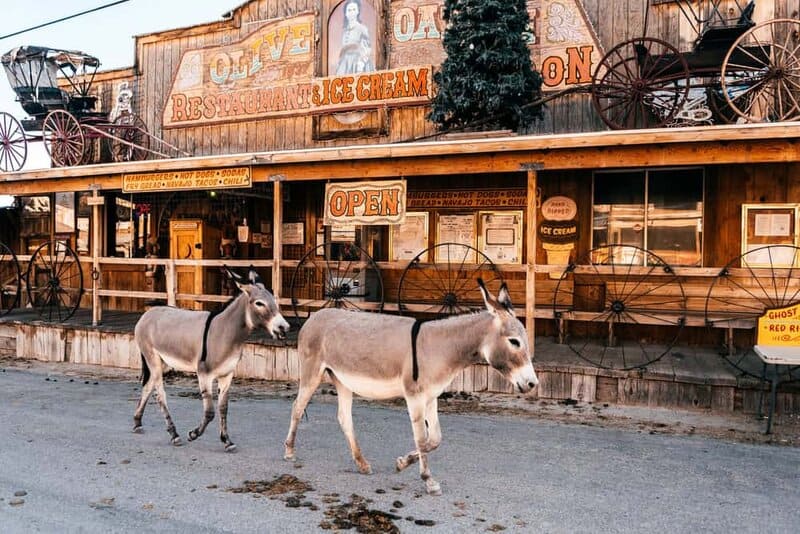
Oatman started as a tent camp in the early 1900s but quickly boomed after a massive gold find. Although it dwindled over the decades, Oatman never fully died—and it reinvented itself as a tourist attraction. Today, visitors come to see the wild burros that freely roam the streets, descendants of the original miners’ pack animals. The town puts on daily shootout reenactments and offers quirky shops and themed restaurants. Historic buildings still stand, including the hotel where Clark Gable and Carole Lombard reportedly honeymooned. Oatman feels like a living ghost town, blending Old West charm with roadside oddity. It’s a crowd-pleaser for travelers exploring Arizona’s historic Route 66.
Berlin, Nevada

Berlin was a company-owned mining town established in the 1890s during a short-lived silver boom. The town never really flourished, and by the early 1900s, it was mostly abandoned. Today, it’s preserved as part of Berlin-Ichthyosaur State Park, combining mining history with fossil discoveries. Visitors can explore original buildings and machinery, as well as the nearby ichthyosaur fossil beds—one of the world’s largest collections. The juxtaposition of industrial and prehistoric history makes Berlin a unique destination. The high desert location and minimal crowds offer a peaceful, educational experience. For those interested in both geology and history, Berlin is a hidden gem.
North Bloomfield, California

North Bloomfield was the center of hydraulic gold mining in the Sierra Nevada during the mid-1800s. It boomed quickly but fell just as fast after environmental regulations restricted the mining method. Today, the town is preserved as part of Malakoff Diggins State Historic Park. Visitors can tour buildings like the general store, schoolhouse, and miners’ cabins. The park also includes remnants of the massive mining equipment used to wash away entire hillsides. North Bloomfield offers a sobering look at the environmental cost of the gold rush. Its remote forest location adds to the feeling of stepping back in time.
White Oaks, New Mexico
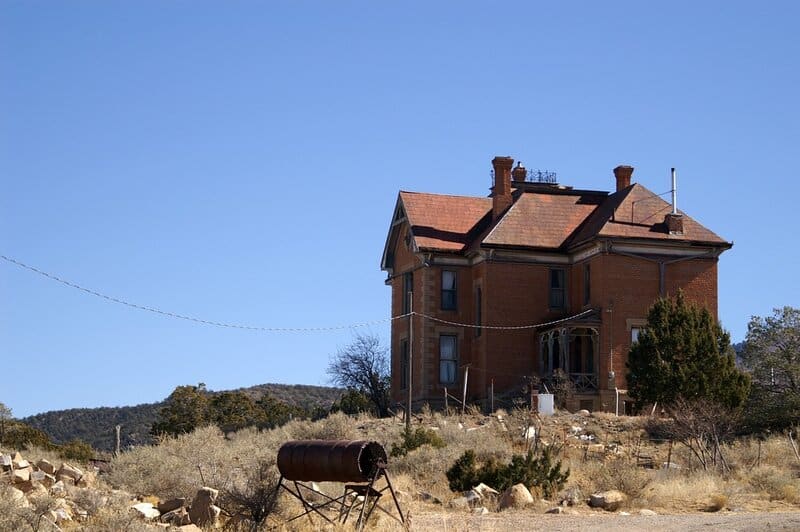
White Oaks rose quickly during the 1879 gold rush and became one of New Mexico’s most promising mining towns. It boasted all the luxuries of the time, including an opera house, multiple newspapers, and even electricity before Santa Fe had it. But when the railroad bypassed the town, its fortunes collapsed just as fast. Today, a few buildings remain standing, including the old No Scum Allowed Saloon, which still serves drinks to curious tourists. The town’s cemetery and ruins offer a haunting glimpse into a once-thriving community. Visitors are drawn by the town’s Wild West legends and eerie, weathered structures. It’s a quiet stop with rich history and ghostly charm.
Independence, Colorado

Located high in the Rockies near Aspen, Independence was founded during Colorado’s gold rush in the late 1870s. Harsh winters and limited supplies made life difficult, and by the 1890s, it was mostly deserted. Legend has it that residents left in a mass exodus, skiing down to Aspen on makeshift planks from their homes. Today, visitors can explore the remnants of cabins, a general store, and a stable, surrounded by alpine beauty. The ghost town is only accessible during summer months, as snow renders the area impassable. Its remote and scenic location makes it a favorite for hikers and history buffs alike. Independence feels like a lost piece of frontier grit frozen in time.
Elkhorn, Montana

Elkhorn began as a silver mining town in the 1870s and eventually grew to include nearly 2,500 residents. Disease and economic collapse forced its decline, and by the early 1900s, it was nearly empty. Today, it’s one of the best-preserved ghost towns in Montana, with two major buildings—Fraternity Hall and Gillian Hall—maintained as part of a state park. The rest of the town sits eerily quiet, with wooden homes and remnants dotting the hills. Tourists often visit for its quiet beauty, historic charm, and ghost stories. It’s especially photogenic in the winter, with snow-dusted rooftops adding to the stillness. Elkhorn is a perfect example of rustic American decay with a preserved heart.

